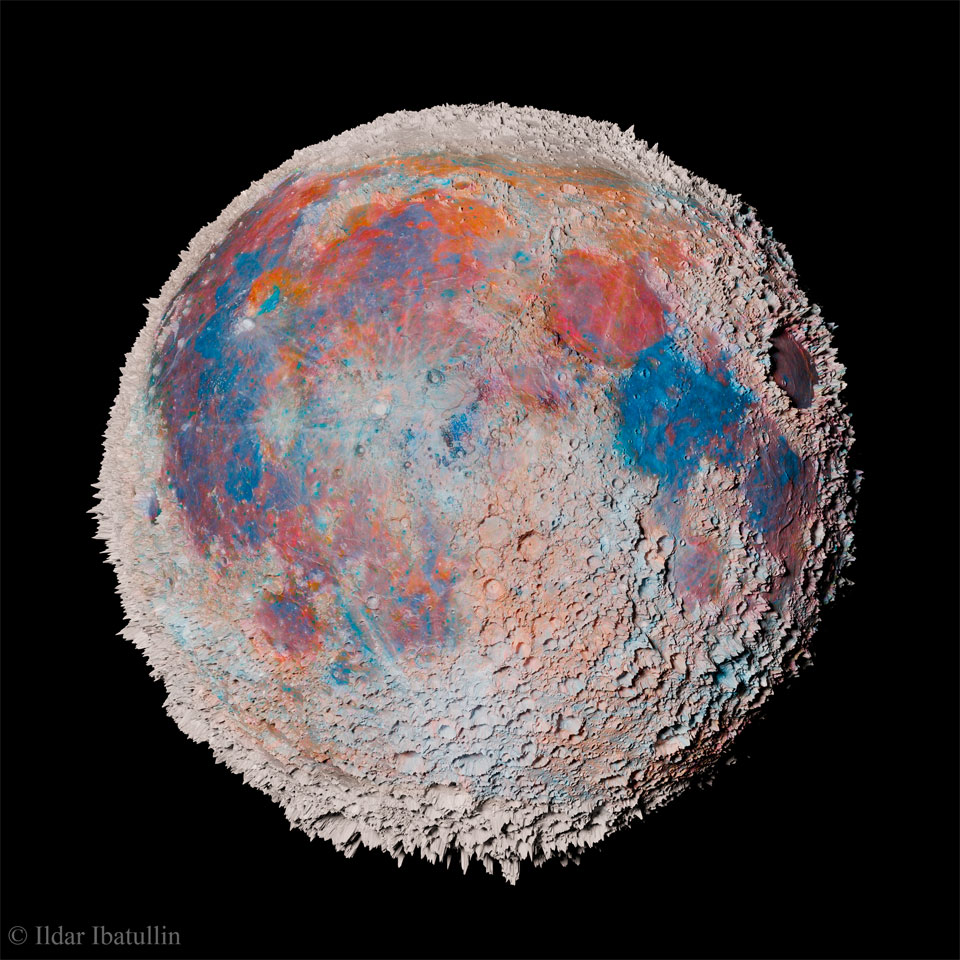誇張的月亮
Exaggerated Moon

發表日期:2024-07-24
我們的月球其實沒有這麼大的環形山。 地球的月球--月球,也不會自然地呈現出這種尖尖的紋理,它的顏色也更加微妙。但這個數字作品是基於現實的。 這張特寫圖片是美國國家航空航天局(NASA)月球軌道鐳射測高儀(LOLA)任務中獲取的月球影像和表面高度資料的數字合成--然後進行了誇大處理,以便於教學理解。 例如,數字增強技術突出了月球高地,並更清晰地顯示了隕石坑,這些隕石坑說明了月球在其 46 億年的歷史中經歷了巨大的轟擊。 被稱為 "maria "的暗區隕石坑較少,曾經是熔融岩漿的海洋。此外,影像的顏色雖然基於月球的真實構成,但也有所改變和誇張。 在這裡,藍色表示富含鐵元素的區域,而橙色則表示鋁元素略微過剩。 儘管數十億年來月球一直向地球展示著相同的一面,但現代科技正在讓人類更多地瞭解它--以及它是如何影響地球的。
原文:Our Moon doesn't really have craters this big. Earth's Moon, Luna, also doesn't naturally show this spikey texture, and its colors are more subtle. But this digital creation is based on reality. The featured image is a digital composite of a good Moon image and surface height data taken from NASA's Lunar Orbiter Laser Altimeter (LOLA) mission -- and then exaggerated for educational understanding. The digital enhancements, for example, accentuate lunar highlands and show more clearly craters that illustrate the tremendous bombardment our Moon has been through during its 4.6-billion-year history. The dark areas, called maria, have fewer craters and were once seas of molten lava. Additionally, the image colors, although based on the moon's real composition, are changed and exaggerated. Here, a blue hue indicates a region that is iron rich, while orange indicates a slight excess of aluminum. Although the Moon has shown the same side to the Earth for billions of years, modern technology is allowing humanity to learn much more about it -- and how it affects the Earth.
※ 本文由萌芽機器人自動轉貼自每日一天文圖(Astronomy Picture of the Day,APOD),原文為英文,正體中文是透過 DeepL 翻譯及 OpenCC 進行自動處理,內容僅供參考,若有任何錯誤之處還請見諒!
關於每日一天文圖:每日一天文圖網站是美國國家航空暨太空總署與密西根理工大學提供的服務,網站每天提供一張影像或圖片,並由天文學家撰寫扼要說明其特別之處。